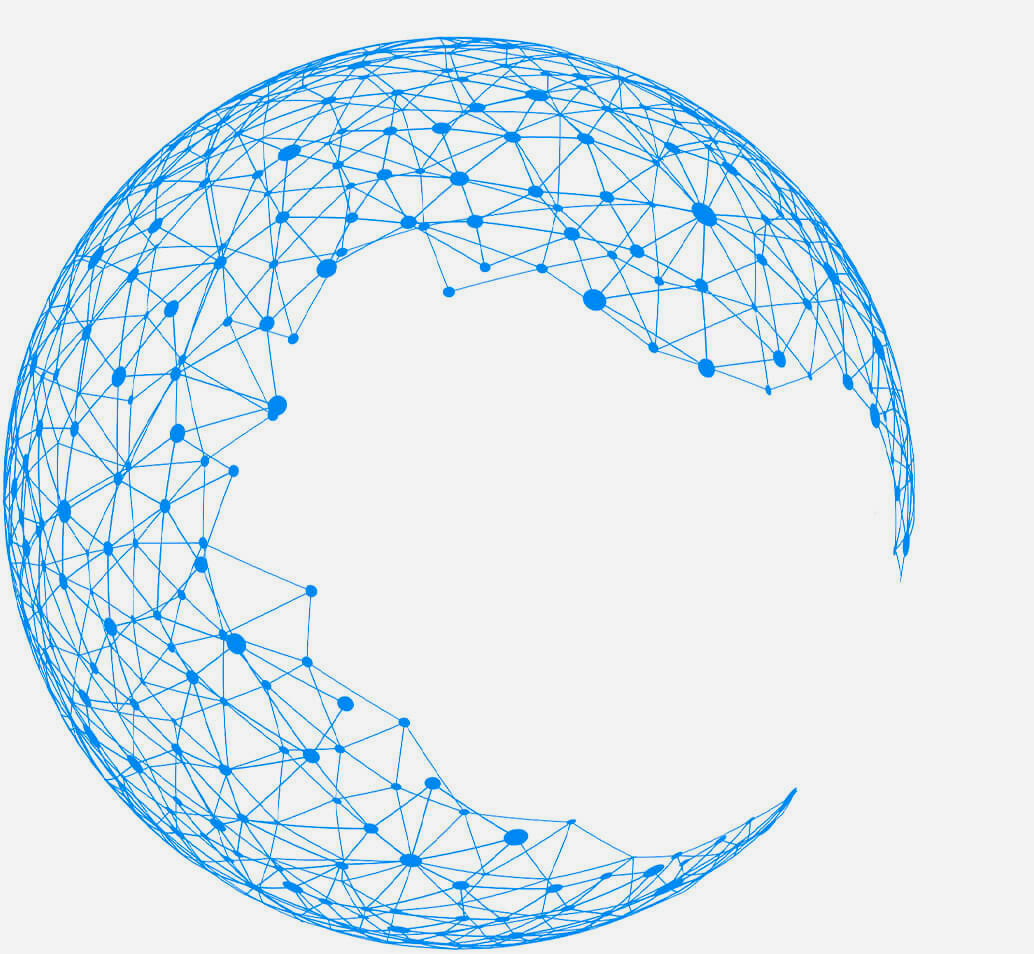-
The platform does everything we’d want it to do. It is simple to use, the development team has been receptive to suggestions and the customer service is outstanding.
Sr. Product Design EngineerTop Utility Located in the Upper Midwest
-
Irth has consistently helped our company save millions of dollars a year by vastly reducing the number of crews we need to dispatch to our 811 locates.
VP of OperationsFortune 500 Telecommunications
-
I use this platform on an everyday basis. It is a very user-friendly tool. Dashboards, reporting, mapping and much more. The field locators tell me every week that they wish we had started using it long ago.
Regulatory Compliance EngineerTop Utility Located in the Southeast
-
This platform has taken our pipeline division from several manual paper/Excel processes to an automated, digital platform. Reports are easier to run, the platform is surprisingly flexible and customer support is wonderful.
Sr. Director of Operations and EngineeringFortune 500 Energy Company
Platform Overview
For decades, we have been leveraging the latest technology to assist our customers in ensuring the safety, resiliency, and reliability of their critical network infrastructure. We offer a wide range of features and technical capabilities encompassing damage prevention, risk analysis, and network infrastructure asset protection, all integrated into a powerful platform.



Top Risks for Telecoms: Telecom’s Risk Management Challenges and How to Mitigate Them


There’s a lot to celebrate in telecommunications today. At the top of the list are telecommunications and media companies’ services that power our digital economy.
This vital role makes it essential for telecoms to mitigate risks and guard against disruptions. Establishing resiliency in the network is paramount, in a world of cyberattacks, economic uncertainty, and other risks for telecoms, including outages caused by excavators.
Mitigating risk is easier said than done. Growing demand coupled with increasing risks makes it important for telecommunications companies to be vigilant when clearing low-risk or assigning action to high-risk tickets.
Growing Demand for Services Increases Risks for Telecoms
Even before the pandemic, some industries and businesses had begun a digital transformation, integrating digital technologies into their services and operations for better efficiency and productivity. Those efforts accelerated during the shutdown resulting in several years of progress achieved in the constricted timeline of only a couple of years.
While some returned to offices, many continued working from home or using video conferencing and other remote-working tools they relied on during the shutdown. Compounding the demand is the adoption of new technologies, such as the Internet of Things (IoT) and artificial intelligence (AI), that require connected devices, systems, and companies to be successful. By 2025, IDC estimates there will be 55.7 billion connected IoT devices (or “things”).
Organizations also realized the benefit of industry ecosystems, sharing non-proprietary data, knowledge, and insights with others in their industry to make better decisions and overcome their limitations in skills and resources to improve efficiency and resiliency.
The services and network infrastructure of telecommunications and media companies support this digital transformation, connectivity, and interconnectedness.
The growth is far from over. From 2023 to 2030, the global telecom services market is expected to expand by 6% annually.
Along with this growth is rising customer expectations of 24/7, always-on, uninterrupted service to power our daily lives. Customers want frictionless and highly secure connections.
Yet, while the dependence on telecommunications to power our daily lives leads to more business, as the network expands, vulnerabilities increase.
Challenges and Top Risks for Telecoms
With the dramatic digital transformation of recent years, it’s exciting to be a part of a telecommunications and media company. The industry is changing at breakneck speeds, and those speeds create challenges and risks to telecoms.
New technologies expand reliance on telecommunications networks
Every major U.S. carrier has deployed 5G nationwide. This connectivity enables the adoption of today’s new technologies and tomorrow’s innovations. These technologies depend on critical infrastructure and interconnectivity with each other and intermediaries, such as APIs (application programming interfaces), cloud providers, and data aggregators. Innovation hasn’t stopped.
Without consistent connectivity, next-generation technologies, including virtual, augmented, and mixed reality in the metaverse, self-driving cars, and Web3 (an entirely new framework for the web), will never take off.
High demand increases telecoms’ carbon footprint
While most people wouldn’t believe the global telecommunications industry was responsible for more carbon dioxide emissions than the airline industry, it’s true (2.6% versus 2%). As demand for services continues to increase, telecoms’ energy footprint expands as well. Many American telcos have committed to boosting sustainability and becoming net zero carbon emissions by adopting renewable energy resources, reducing energy consumption, and more.
Economic uncertainty, inflation, and rising energy costs
Telecoms grapple with increasing operating costs, including network and infrastructure investments and energy, and when and if to pass rate increases on to customers. Providers are expected to deliver a fast and reliable experience to customers. This requires investments in network infrastructure and maintenance of existing networks. Finding the right balance between controlling costs and infrastructure investments to provide a frictionless experience will continue to be a challenge.
As the regulatory landscape gets pressured to account for challenges such as cost-of-living increases, sustainability, data security, and more, telecoms will be required to comply with shifting regulations and fragmented regulatory approaches. Some regulatory obligations could increase costs for telecoms.
Imagine the ramifications if a cloud provider goes down – every other business reliant on that cloud solutions provider won’t be able to stay operational, risking reputation, money, and safety. In 2021, the Colonial Pipeline, one of the largest pipelines in the United States, was the victim of a ransomware attack when cyber criminals infected its digital systems and caused it to be shut down for several days, making it the largest attack of critical infrastructure in the United States.
The attack surface for cybercriminals of telecommunications companies’ critical network infrastructure increases as more companies undergo digital transformation.
But cyberattack isn’t the only threat to business and service interruptions for telecoms. According to the CGA DIRT Report, telecommunications and natural gas incur the most damages by digs. Locating practices by facility owners, subcontractors, or other service providers contribute to the majority of telecom damages. CGA found that since 2019, damages have plateaued or slightly increased. There is an increase in excavation across the United States as a result of the Infrastructure Investment and Jobs Act, and utility work, including telecom, is the work most commonly done when damages occur.
When emergency services such as 911 rely on cell location services which work only on fiber, fiber cuts become even more detrimental. Any delays in emergency services, whether the 911 system goes offline or because calls are rerouted due to failure, increase the likelihood of negative outcomes. Unfortunately, many communities have grappled with 911 outages because of fiber cuts.
While inflation and the economy aren’t risks telecom companies can control, there are ways for the telecom industry to be proactive in monitoring and mitigating risks.
- Follow damage prevention best practices: Damage to buried telecommunications cables can sever vital services to your customers. The more efficiently and effectively you can discern low-risk tickets to clear and high-risk tickets to act on by using industry-leading damage prevention tools and partners, the better for your business. Only trust a robust 811 ticket management system with a suite of offerings to give an unequalled perspective of activities and precise locates because of custom geocoding tools.
- Prioritize risk mitigation efforts to the most probable activities to cause damage: One of the recommendations from the DIRT Report is to “prioritize damage prevention efforts based on immediate needs and greatest impact.” Using data analysis and artificial intelligence, you can better understand the level of risk for activities around your critical network infrastructure.
- Increase training effectiveness: You can improve training effectiveness when you use a platform that’s more than a learning management system but one that uses data and reporting to evaluate and improve educations and training programs.
When you partner with an industry leader like Irth Solutions, you won’t get bogged down with the challenges and risks for telecoms. Let us help you put our damage prevention and risk management solutions to work for you, so you can focus on solving other challenges in your business. Schedule a demo today to learn all the ways we can help mitigate risk for you.
Are you curious how your damage prevention and risk management efforts can be improved with the depth of our data?
Irth's market-leading SaaS platform improves resilience and reduces risk in the sustainable delivery of essential services that millions of people and businesses rely on every day. Energy, utility, and telecom companies across the U.S. and Canada trust Irth for damage prevention, training, asset inspections, and land management solutions. Powered by business intelligence, analytics, and geospatial data, our platform helps deliver the 360-degree situational awareness needed to proactively mitigate and manage risk of critical network infrastructure in a changing environment. Irth has been the top provider for 811 (one call) ticket management and utility locating software since 1995.
© 2024 Irth Solutions, L.L.C. All rights reserved | Terms of Service | Privacy Policy














